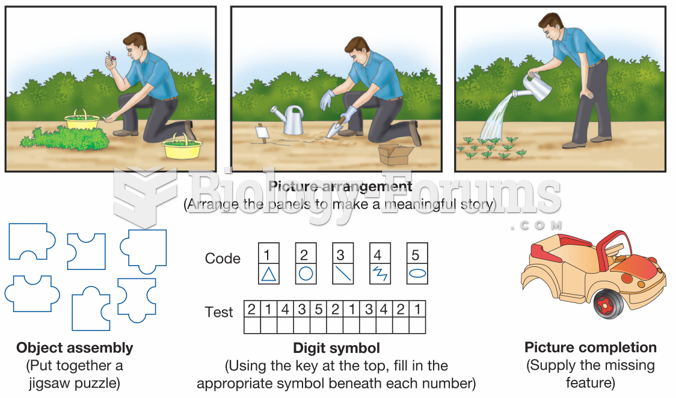|
|
|
Prostaglandins were first isolated from human semen in Sweden in the 1930s. They were so named because the researcher thought that they came from the prostate gland. In fact, prostaglandins exist and are synthesized in almost every cell of the body.
Signs and symptoms that may signify an eye tumor include general blurred vision, bulging eye(s), double vision, a sensation of a foreign body in the eye(s), iris defects, limited ability to move the eyelid(s), limited ability to move the eye(s), pain or discomfort in or around the eyes or eyelids, red or pink eyes, white or cloud spots on the eye(s), colored spots on the eyelid(s), swelling around the eyes, swollen eyelid(s), and general vision loss.
The people with the highest levels of LDL are Mexican American males and non-Hispanic black females.
After a vasectomy, it takes about 12 ejaculations to clear out sperm that were already beyond the blocked area.
For pediatric patients, intravenous fluids are the most commonly cited products involved in medication errors that are reported to the USP.







